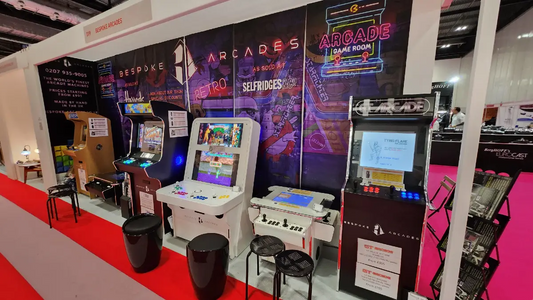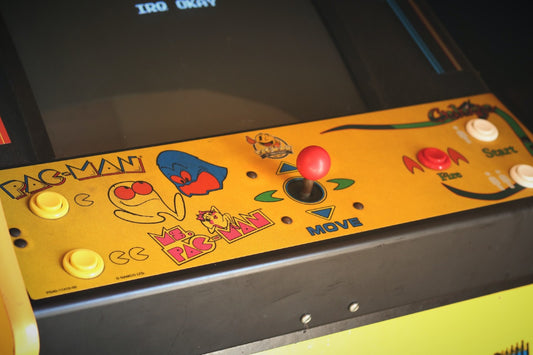Early Arcade History: Mid 70s Games
During 1973 and early 1974, many of the Arcade games being produced were different variations of Atari’s Pong. Churning out so many similar games however, created a saturation in the market of ball and paddle video games which caused the market to crash. It was evident that the video game market needed something new and innovative.
Gotcha (1973)
Atari’s fourth game, Gotcha, saw a break-away from the previous three games that they had created (Pong, Space Race and Pong Doubles). Gotcha was the first maze arcade game, and proved popular despite the controversy surrounding the game.
The game-play consists of two players, player one pursuing player two around a maze. The first player (the pursuer) is represented by a square, and the second player (the pursued) was signified by a plus sign. An electronic beep sound was heard throughout the game-play and the sound increased in frequency as the pursuer got closer to the pursued. If the player caught the pursued, they gained a point and the game started over.
Gotcha is infamous for the controversy that surrounded the game. When originally produced, instead of joysticks, pink rubber bulges that were squeezed to control the players were used as the games controls. However, it was suggested by many that they were offensive and had rude connotations. And in later versions of the machine these were replaced with joysticks.
Basketball (1974)
Since the popularity of Pong, sports games were rife on the video game market. Taito had a fresh approach to this and in 1974 released the first basketball game – Basketball. Basketball was also the first video game to feature human figures. The game-play is simple. Each player controls both a forward and a guard on their team. The aim of the game is to score by getting the ball into the other team’s basket.
Gran Trak 10 (1974)
In July 1974, Gran Trak 10 was released as the first car racing video game. The controls to the game, were also a first for the arcade gaming world. Including a steering wheel, gear shifter, accelerator and brake foot pedals. The ultimate aim of Gran Trak 10 is to build up as many points as the player can whilst racing against the clock. The game was released under the name ‘Race Circuit Automaten’ in Europe. Later in 1974 a two player version of the game was released under the name ‘Gran Trak 20’.
Many errors took place in production of the game. Furthermore, an accounting error occurred, meaning the cabinets were selling for $995 when they cost $1095 to manufacture. Leading to Atari losing $500,000.
Speed Race (1974)
Speed Race is considered one of the first driving racing video games, released In November 1974. The game was arguably a turning point as it introduced scrolling graphics, where sprites moved along a vertical overhead track, giving the impression that the road is getting wider when the car appears to be moving forward. Furthermore, the controls for Speed Race included a race wheel controller with an accelerator, gears, speedometer and even a tachometer. Another instance of this is the early examples of difficulty levels in games, as the game offers the choice between ‘Beginners’ or ‘Advanced’ levels to play. The game does also offer a two player mode, however, this is alternating which allows two players to alternate turns and beat each other’s high score.
Points are gained by the speed of which the player is driving, so the higher the speed the higher the score. Furthermore, you are seen to be racing against other cars in the game, which usually appear when the score increases.
When released in America, the game was re-branded under the name ‘Wheels’ by Midway Games. It is considered an influential racing game in the United States, impacting on future games that were released. ‘Wheels’ sold over 7,000 video game arcade cabinets in America.
Tank (1974)
Tank is a two player arcade game, released in November 1974. The gameplay entails using 2 joysticks, using dual configuration, to steer from mines; whilst simultaneously shooting at the enemy (the other player). Tank is thought of as being the first example of using ROM chips to store graphic data in video game production.



